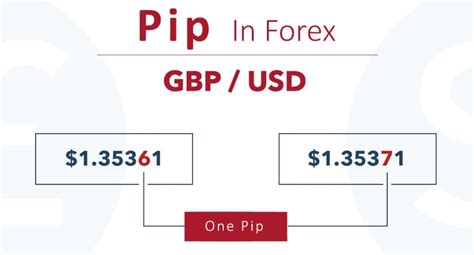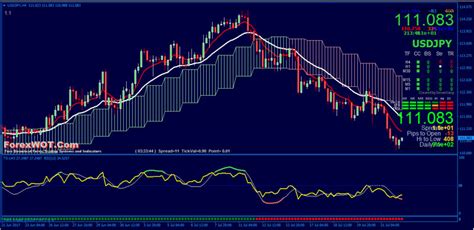Precision in price movements plays a crucial role in foreign exchange markets, where traders rely on accurate calculations to optimize trade execution. MT4 Forex provides a structured platform for analyzing market fluctuations, where terms like points and pips define the smallest measurable price changes. A 50-point shift can influence profit potential, risk exposure, and overall strategy effectiveness depending on the selected currency pair and trading approach. Understanding how these movements impact order placement, stop-loss settings, and technical analysis ensures better decision-making. Market conditions, leverage, and spreads all contribute to price dynamics, making it essential to interpret point-based fluctuations with accuracy.
Understanding Points, Pips, and Price Movements in MT4
Precision in forex trading depends on accurate price measurements. MT4 Forex uses points and pips as fundamental units to track currency fluctuations. Each movement affects trade execution, profitability, and risk exposure. Recognizing how these price increments operate in different currency pairs enhances decision-making in various trading strategies. Differences in price structures, spreads, and order execution methods influence the effectiveness of stop-loss orders, take-profit orders, and position sizing.

What Are Points and Pips in MT4 Forex?
Point represents the smallest change in price on the MT4 platform. It is typically the fifth decimal place in major currency pairs (EUR/USD: 1.10005 to 1.10006 = 1 point).
Pip is a price movement measuring the fourth decimal place in most pairs (EUR/USD: 1.1000 to 1.1001 = 1 pip).
For JPY pairs, a pip represents the second decimal place (USD/JPY: 145.30 to 145.31 = 1 pip).
Point and pip value impact trading costs, including spreads, commissions, and slippage.
Trading platforms define pricing models differently. Understanding this differentiation prevents miscalculations in risk-reward ratios, trade execution strategies, and money management techniques.
How Do Points Translate into Real Market Movements?
Points directly impact trading instruments like currency pairs, indices, metals, and energies. When evaluating market trends, price movements dictate entry and exit points, affecting scalping, swing trading, and position trading strategies.
Impact on Spread Costs:
Brokers charge spreads in points, influencing trade profitability.
A lower spread reduces trading costs, especially for high-frequency scalping strategies.
Price Movement in Timeframes:
M1 and M5 timeframes show micro-point fluctuations for day traders.
D1 and W1 timeframes demonstrate long-term price movement trends.
Effect on Technical Analysis:
Moving averages, Bollinger Bands, and Fibonacci retracement levels rely on point-based calculations.
Indicators like ATR and ADX measure volatility and trend strength in relation to point changes.
Understanding point-based market shifts allows traders to optimize entry timing, position sizing, and trade management.
Examples of Point and Pip Calculations in Different Currency Pairs
Currency Pair Price Movement Table
Different currency pairs exhibit unique point-based calculations based on decimal placements.
| Currency Pair | Point Definition | Pip Definition | 1 Pip Value (Standard Lot) | Impact on Trading |
|---|---|---|---|---|
| EUR/USD | 1.10005 → 1.10006 = 1 point | 1.1000 → 1.1001 = 1 pip | $10 per pip | Standard pip structure for most forex trades |
| USD/JPY | 145.305 → 145.306 = 1 point | 145.30 → 145.31 = 1 pip | $10 per pip | JPY pairs use 2 decimal places per pip |
| GBP/USD | 1.25005 → 1.25006 = 1 point | 1.2500 → 1.2501 = 1 pip | $10 per pip | Higher volatility compared to EUR/USD |
| XAU/USD (Gold) | 1915.55 → 1915.56 = 1 point | 1915.5 → 1916.5 = 1 pip | Varies by broker | Metals move differently in pips compared to forex pairs |
| BTC/USD (Bitcoin) | 42500.50 → 42500.51 = 1 point | 42500 → 42501 = 1 pip | Varies by lot size | High volatility in cryptocurrency markets |
Price movement structures determine trading costs, risk exposure, and spread efficiency. Forex commodities, indices, and metals each have distinct point-based valuation models.
Why Understanding Points Is Crucial for Risk Management?
Trading without proper point-based risk assessment leads to excessive losses. Risk management techniques such as stop-loss orders, take-profit orders, and position sizing depend on point fluctuations.
Stop-Loss Placement: Setting 20-point vs. 50-point stop-loss levels changes potential risk exposure.
Risk-Reward Ratio Adjustments: A 1:2 risk-reward ratio on a 100-point trade provides a structured exit strategy.
Slippage and Volatility Control: High ATR values indicate unstable price movements, requiring wider stop-loss placement.
Trade Journal Optimization: Tracking historical point-based price reactions refines entry points and trend strategies.
Implementing structured risk control techniques based on point calculations strengthens long-term profitability in diverse market conditions.
Price measurement accuracy improves forex trading efficiency. Understanding point-based movements refines risk tolerance, technical indicator application, and strategy execution. Every trade benefits from precise calculations, allowing traders to minimize unnecessary exposure while maximizing performance.
Order Execution and Trading Strategies Using Points in MT4
Efficient trading in MT4 Forex relies on precise order execution and well-structured strategies. Points influence how traders set stop-loss orders, take-profit orders, and risk-reward ratios. The effectiveness of different trading strategies, including scalping, swing trading, and algorithmic trading, depends on how point-based price fluctuations are analyzed. Variations in slippage, spread costs, and execution speeds further impact order placement and profitability.
How Do Stop-Loss and Take-Profit Orders Relate to Points?
Stop-loss orders define exit points to limit potential losses. Setting a 20-point stop-loss versus a 50-point stop-loss alters overall risk exposure.
Take-profit orders secure profits at predefined price levels. A trade targeting 100 points ensures a risk-reward ratio when paired with a stop-loss.
Market volatility affects stop placement, especially in instruments like metals, indices, and cryptocurrencies.
Technical indicators such as ATR and Bollinger Bands assist in adjusting stop-loss distances dynamically.
Trend-following strategies favor wider stop-loss placements, while scalping requires tighter stops due to rapid price fluctuations.
Stop and profit placements determine long-term profitability, capital preservation, and trading consistency.
Point-Based Scalping Strategies for Short-Term Trading
Scalping strategies rely on rapid executions, with small point gains accumulating over multiple trades. Traders targeting 5-15 point movements benefit from low-spread currency pairs like EUR/USD or USD/JPY.
Entry Confirmation:
Utilize stochastic oscillators and moving averages to identify high-probability entry points.
Execute trades on M1 or M5 timeframes to capture minor fluctuations.
Stop-Loss and Take-Profit Adjustments:
Stop-loss orders placed within 5-10 points protect against unnecessary drawdowns.
Take-profit targets align with ATR values, ensuring gains outweigh risks.
Trade Frequency and Execution Speed:
High-frequency trading models benefit from lower spreads and efficient execution.
Trailing stops secure profits without manual intervention.
Scalping requires fast reflexes, minimal slippage, and a deep understanding of spread costs.
Swing Trading and Point Movements Over Longer Timeframes
Price fluctuations over H4, D1, and W1 timeframes determine swing trading opportunities. Unlike scalping, swing traders capitalize on multi-day movements within a 100–300 point range.
Trend Identification: Moving averages and Ichimoku clouds confirm long-term trend direction.
Support and Resistance Levels: Historical price levels indicate potential entry and exit zones.
Risk Control Measures: Wider stop-loss orders (50-100 points) accommodate fluctuations.
Market Conditions: Economic releases and news trading strategies impact extended holding periods.
Swing trading provides stable returns while minimizing excessive transaction costs.

Algorithmic Trading: How Expert Advisors Use Point-Based Calculations
Point-Based Automation in Algorithmic Trading
Algorithmic models use predefined conditions to execute trades. Expert Advisors (EAs) rely on point movements to optimize trading strategies.
| Algorithmic Trading Component | Impact on Point-Based Strategies |
|---|---|
| Entry Signal Calculation | Identifies price movements exceeding a set point threshold |
| Risk Management Parameters | Defines stop-loss and take-profit levels based on historical volatility |
| Market Orders and Execution Timing | Adapts to high-speed price fluctuations in forex commodities and indices |
| Trailing Stops and Dynamic Adjustments | Adjusts stop placement as price advances without manual intervention |
| Multi-Timeframe Analysis | Combines M15, H1, and H4 timeframes to refine trade precision |
Expert Advisors use point-based risk assessments, technical indicators, and market conditions to maximize efficiency.
Slippage and Point Differences: How It Affects Order Execution
Slippage occurs when an order is executed at a different price than expected, impacting profitability. The difference between expected and actual price fills varies based on market conditions.
Low liquidity instruments like cryptocurrencies and futures face greater slippage risks.
High-impact news events widen spreads, leading to unfavorable execution prices.
Scalping strategies suffer when point deviations exceed stop-loss placement.
Slippage tolerance settings within MT4 allow traders to define maximum acceptable price differences.
Point-based execution precision ensures trade consistency, minimal loss impact, and enhanced order efficiency.
Optimizing order execution requires structured stop placement, well-defined trading strategies, and automated execution models. Strategic adjustments to point-based pricing, market conditions, and trade timing enhance profitability and risk mitigation in volatile environments.

Risk Management and Position Sizing Based on Points
Protecting capital and maintaining trade consistency in MT4 Forex depends on effective risk control. Position sizing, risk-reward ratios, and spread costs influence profitability, ensuring sustainable trading performance. Point-based price fluctuations impact stop-loss orders, take-profit orders, and execution fees, requiring a structured approach to mitigate excessive losses. Currency pairs, indices, and metals exhibit unique price behaviors, making position adjustment and cost analysis critical for long-term success.
Using Position Sizing to Control Risk Per Point Movement
Position sizing determines the lot size allocated per trade, directly affecting risk exposure per point movement. A structured approach reduces emotional decision-making and prevents account depletion.
Key Position Sizing Considerations
Account Balance and Risk Percentage: Standard risk models allocate 1-2% per trade based on available equity.
Currency Pair Volatility: Higher ATR values in instruments like XAU/USD (gold) or BTC/USD (Bitcoin) require adjusted lot sizes.
Leverage and Margin Requirements: Increased leverage magnifies risk, demanding strict stop-loss enforcement.
Timeframe Sensitivity: Shorter timeframes like M1 and M5 require tighter risk management than H4 or D1.
Optimized position sizing ensures controlled exposure, stable drawdowns, and improved psychological discipline in volatile conditions.
How Risk-Reward Ratios Are Defined Using Point-Based Price Movements
Step-by-Step Risk-Reward Optimization
Step 1: Identify Trade Setup and Entry Point
Use Fibonacci retracements, Bollinger Bands, or Moving Averages to confirm potential trade zones.
Step 2: Define Stop-Loss Placement
Assess volatility levels using ATR, ensuring stop-loss orders align with historical support or resistance zones.
Step 3: Set a Realistic Take-Profit Target
Apply a minimum 1:2 risk-reward ratio to maintain profitability in long-term trading.
Step 4: Monitor Trade Execution and Adjust Accordingly
Use trailing stops in trending markets to capture extended point-based gains.
Applying structured risk-reward frameworks ensures higher trade consistency, capital preservation, and sustainable profitability.
Impact of Spreads and Commissions on Profits Calculated in Points
Spread and Commission Impact Table
Different currency pairs and commodities exhibit varying spread costs and commission structures, affecting overall trade efficiency.
| Instrument | Average Spread (Points) | Commission Model | Impact on Scalping & Swing Trading |
|---|---|---|---|
| EUR/USD | 1.0 - 2.0 | Zero commission (Standard) | Low-cost, ideal for scalping |
| GBP/USD | 2.5 - 3.5 | Spread-only or per-lot commission | Moderate spread, effective for swing trading |
| XAU/USD (Gold) | 30 - 50 | Commission per lot | High volatility, wide spreads require strategic positioning |
| BTC/USD (Bitcoin) | 50 - 100 | Percentage-based fees | Significant spread impact, best suited for long-term holdings |
| USD/JPY | 1.0 - 1.8 | Zero commission | Low spread, optimal for short-term trading |
Spread variations influence entry costs, exit efficiency, and overall profitability, making it essential to select the right trading instruments based on strategy goals.
Maintaining risk control requires calibrated position sizing, structured risk-reward ratios, and cost awareness. By understanding how points affect trade exposure, forex traders optimize risk tolerance, improve execution precision, and develop more sustainable strategies in fluctuating market conditions.
Technical Indicators and Chart Patterns in Point-Based Trading
Analyzing price trends with technical indicators and chart patterns provides traders with structured entry and exit points in MT4 Forex. Point-based price movements influence moving averages, Bollinger Bands, Fibonacci retracements, and ADX calculations, helping traders determine trend strength and market volatility. Recognizing reversal chart patterns and using ATR for volatility analysis improves decision-making in scalping, swing trading, and position trading strategies.

How Moving Averages Help Identify Price Trends in Point Movements
Moving averages smooth out market fluctuations to highlight long-term trends. Traders use SMA (Simple Moving Average) and EMA (Exponential Moving Average) to analyze currency pair price movements over different timeframes.
Short-Term Trends:
M5 and M15 timeframes rely on EMA(10) and EMA(20) to track rapid shifts.
High-frequency strategies, such as scalping, depend on moving averages for quick decision-making.
Long-Term Trends:
H4 and D1 timeframes use SMA(50) and SMA(200) to confirm trend direction.
Swing trading and position trading incorporate moving averages to assess bullish or bearish momentum.
Moving averages filter market noise, allowing for clearer trade execution and risk assessment based on point fluctuations.
Using Bollinger Bands to Identify Volatility in Points
Market volatility influences price swings and trading opportunities. Bollinger Bands help traders gauge overbought and oversold conditions based on point deviations.
Band Expansion and Contraction:
Wide bands signal increased volatility, indicating breakout potential.
Narrow bands suggest low volatility, leading to sideways market movements.
Price Action Interpretation:
Price touching the upper band signals possible resistance.
Price nearing the lower band suggests potential support.
Application in Scalping and Swing Trading:
Scalpers use Bollinger Bands on M1 and M5 to capture quick price fluctuations.
Swing traders rely on H1 and H4 bands to evaluate market conditions for trend continuation.
Bollinger Bands enhance volatility assessment and trade precision in MT4 Forex trading.
The Role of Fibonacci Retracements in Predicting Point-Based Price Corrections
Fibonacci Retracement Table for Point-Based Trading
Fibonacci retracement levels identify potential price pullbacks based on historical support and resistance zones.
| Retracement Level | Point-Based Interpretation | Application in Trading Strategies |
|---|---|---|
| 23.6% | Minor retracement, weak correction | Used for scalping entries in trending markets |
| 38.2% | Shallow pullback, moderate trend continuation | Entry point for day traders and swing traders |
| 50.0% | Psychological level, potential reversal | Common retracement for breakout strategies |
| 61.8% | Strong retracement, trend resumption | Key level for long-term position trades |
| 78.6% | Deep pullback, possible full reversal | Used in high-risk reversal trades |
Fibonacci retracements guide point-based price movement analysis, refining trade execution across different trading instruments.
ADX and Trend Strength Measurement in Points
Trend strength defines momentum-based trading strategies. ADX (Average Directional Index) quantifies bullish or bearish trends using point fluctuations.
ADX Above 25: Strong trend in currency pairs like GBP/USD, EUR/USD.
ADX Below 20: Weak trend, leading to range-bound price movements.
ADX and Scalping: Low ADX values indicate quick point reversals, ideal for short-term trades.
ADX and Swing Trading: Strong ADX confirms multi-day price movements, assisting trend-following strategies.
ADX enables traders to assess market conditions and determine appropriate entry and exit points.
Chart Patterns That Help Predict Point-Based Price Reversals
Recognizing chart patterns improves entry timing in volatile markets. Price structures confirm trend exhaustion or continuation, assisting in trade optimization.
Head and Shoulders: Signals bearish reversals in extended uptrends.
Double Tops and Bottoms: Indicate failed breakouts and market corrections.
Triangles (Ascending/Descending): Predicts continuation trends in directional markets.
Flags and Pennants: Short-term consolidation patterns used in scalping and swing trading strategies.
Chart pattern analysis refines point-based trading decisions, enhancing trade consistency and profitability.
ATR (Average True Range) and Point-Based Market Volatility Analysis
ATR measures market volatility in points, adjusting risk management and stop-loss settings accordingly.
High ATR Values:
Seen in XAU/USD, BTC/USD, and indices, requiring wider stop-loss distances.
Higher volatility suggests potential breakout conditions.
Low ATR Values:
Common in USD/JPY and EUR/USD, indicating stable price movements.
Lower volatility favors tight stop-loss settings and small position sizes.
ATR guides risk tolerance adjustments, improving trade efficiency across different timeframes.
Applying technical indicators and chart patterns enhances point-based trading precision. Each tool provides insights into trend direction, volatility levels, and market conditions, helping traders optimize risk management and execution strategies in MT4 Forex.

Timeframes and Market Analysis in MT4 Forex
Point-based price movements vary depending on the timeframe used in MT4 Forex. Each trading strategy, from scalping to position trading, requires specific time-based analysis. Institutional and retail traders rely on tick charts, short-term timeframes, and long-term price trends to enhance decision-making. Understanding how points behave across different timeframes optimizes risk management, entry timing, and technical analysis applications.
How Point-Based Movements Vary Across Different MT4 Timeframes
Different timeframes present unique price behaviors, affecting trading strategies, risk tolerance, and execution methods.
Short-Term Timeframes (M1, M5, M15)
Best suited for scalping and day trading strategies.
ATR (Average True Range) values highlight minute-by-minute volatility in points.
Requires tight stop-loss orders (5–15 points) due to rapid price fluctuations.
Medium-Term Timeframes (M30, H1, H4)
Commonly used for swing trading and trend-following strategies.
Moving averages (SMA 50, SMA 200) help filter short-term noise.
Risk-reward ratios are easier to manage with point-based calculations.
Long-Term Timeframes (D1, W1, MN)
Used in position trading and institutional market analysis.
Fibonacci retracement levels and ADX strength trends define macro trading decisions.
Wider stop-loss distances (100+ points) accommodate larger market moves.
Selecting an appropriate timeframe enhances trade execution and market interpretation across different forex instruments.
Short-Term vs. Long-Term Timeframe Strategies for Point-Based Trading
Short-Term Trading Characteristics
Scalping and day trading rely on tight spreads in low-volatility currency pairs (EUR/USD, USD/JPY).
Technical indicators such as Bollinger Bands and Stochastic Oscillator confirm overbought/oversold conditions.
Point-based stop-loss orders remain below 20 points, minimizing drawdowns.
Long-Term Trading Considerations
Higher timeframes (H4, D1, W1) favor swing trading and position strategies.
Chart patterns like head and shoulders, triangles, and wedges indicate trend reversals over extended periods.
Risk-reward ratios exceed 1:3, allowing for wider take-profit targets in volatile markets.
Short-term strategies maximize frequent but small gains, while long-term trading captures large price movements over weeks or months.
Tick Charts and How They Reflect Point-Based Micro Movements
Tick Chart Data for Point-Based Analysis
Tick charts measure real-time price changes, providing insight into market microstructure and liquidity levels.
| Timeframe Type | Data Source | Best Used For | Trading Considerations |
|---|---|---|---|
| Standard Timeframes (M1, H1, D1) | Time-based | General trend analysis | Averages out price movements |
| Tick Charts (10, 50, 100 ticks) | Trade executions | High-frequency trading | More detailed point-based fluctuations |
| Volume-Based Charts | Transaction size | Market depth | Institutional trading focus |
Tick charts provide high-frequency traders with a real-time perspective on price action and point changes, improving entry precision.

How Institutional Traders Analyze Point Movements on Higher Timeframes
Institutional traders structure long-term market positions using macro trend analysis. The higher the timeframe, the more reliable the data for strategic trade execution.
Macroeconomic Events and Fundamental Impact:
Interest rate decisions and GDP reports affect point-based price shifts on D1 and W1 timeframes.
Trend-following models integrate Ichimoku clouds and ADX readings for sustained market momentum.
Liquidity Considerations and Volume Impact:
Institutions execute trades in phases, minimizing slippage in low-volatility environments.
Point-based spreads on major forex pairs remain stable, optimizing execution efficiency.
Institutional strategies focus on long-term price projections, risk distribution, and high-volume trade execution, making timeframe selection essential for profitability.
Time-based market analysis refines trade timing, risk assessment, and price interpretation in MT4 Forex. Aligning strategies with short-term volatility or long-term trends improves execution precision, reducing unnecessary risks while capitalizing on sustained market movements.
Conclusion
Accurate point measurement plays a key role in MT4 Forex trading, influencing trade execution, risk management, and strategy optimization. A 50-point price movement may appear small, but its significance varies across currency pairs, order types, and trading strategies. Whether executing a scalping trade in a short timeframe or setting a stop-loss for long-term market positioning, understanding how points convert into price fluctuations ensures precise decision-making.
Technical analysis, including moving averages, Fibonacci retracements, and Bollinger Bands, helps traders navigate market movements based on point-based calculations. A structured risk approach using position sizing and risk-reward ratios minimizes unnecessary exposure while optimizing profitability. The influence of timeframes further refines strategy selection, allowing traders to adapt to market conditions effectively.
Every trader benefits from mastering point-based fluctuations in price charts. Whether leveraging technical indicators, executing trades with limit orders, or adjusting strategies for market volatility, the ability to interpret these movements leads to improved efficiency and profitability. Expanding knowledge of MT4 Forex mechanics and integrating advanced trading techniques ensure a more controlled and data-driven approach to trading success.
Points and pips represent different levels of price movement in trading. A pip is the smallest price increment for most currency pairs, typically the fourth decimal place (0.0001), except for JPY pairs, where it is the second decimal place (0.01). A point, on the other hand, is one-tenth of a pip, making 10 points equivalent to 1 pip.
Market orders execute trades at the current price but may be affected by slippage.
Limit orders ensure trades are executed at a pre-set price, preventing unfavorable fills.
Stop orders trigger trades when the market reaches a specific price level.
Trailing stops adjust automatically to lock in profits while reducing risk.
Scalping and day trading are commonly used for short-term market movements in MT4 Forex. Scalping focuses on capturing small price changes, often relying on M1, M5, or M15 timeframes, while day trading allows for intraday execution based on technical indicators and market trends.
Moving Averages smooth price data and indicate trends.
Bollinger Bands measure volatility and price range.
Fibonacci Retracement helps identify key support and resistance levels.
ADX (Average Directional Index) determines trend strength.
Risk management prevents excessive losses and ensures sustainable trading. Using stop-loss orders, position sizing, and risk-reward ratios, traders can protect their capital while maximizing profitability. Managing leverage and avoiding overexposure to high-volatility pairs further reduces potential risks.
Understanding the relationship between timeframes and price movements enhances the ability to align strategies with market conditions, ensuring optimal trade execution and profitability.
M1 to M15: Best for scalping and high-frequency trading.
H1 to H4: Ideal for intraday traders who hold positions for a few hours.
D1 and W1: Suitable for swing and position traders analyzing long-term trends.







